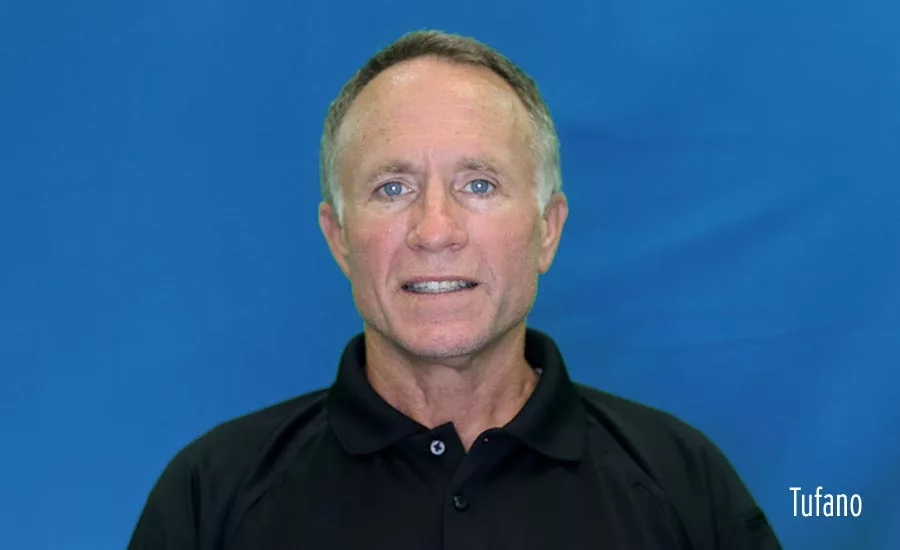Health, Wellness and Physical Fitness and Your Security Officers
Are Your Security Officers Fit for Duty?


About the Author
Andy Tufano is the owner/operator of Goldstar Training. He holds a Master’s degree in Communication from California State University at Fullerton. Tufano is an experienced college communications educator and currently teaches at a public Southern California college. He is a recognized subject matter expert (SME) in verbal conflict management. Over the past 10 years he has trained more than 1,000 students in conflict management. His book, “Conflict Management for Security Professionals” has been well received in the professional security industry. He has been a featured speaker at IAHSS and ASIS events.
It may well be that the primary reason that security officers have historically struggled to achieve high levels of organizational and vocational relevance and performance is based solely on their generalized lack of health, wellness and physical fitness. Although these truths are self-evident and have been widely known for many years, the security industry and organizations that deny this have created many organizational dilemmas.
- Organizations can’t establish reliable competency standards that rely on health, wellness or physical fitness.
- Unhealthy, unwell and unfit personnel cannot provide high levels of physical protection for employees and others.
- Organizations can’t establish reliable training programs that relay on health, wellness and physical fitness.
- Unhealthy, unwell and unfit personnel cannot establish necessary social control (authority) for influeporncing behavior or protecting people.
The Elephant in the Room
Does being unhealthy, unwell, or physical unfit improve the efficiency or effectiveness of any regularly performed job duty? On its face, this may seem like a foolish question. But the answer is both obvious and instructive for a discussion on security officer health, wellness and fitness. Obviously, health, wellness and physical fitness play an important role in the performance of any job duty. However, it may have little discernible effect on many of the job duties that organizations regularly perform. For instance, there are many sedentary job assignments that personnel perform where being overweight, obese, injured (temporary or permanent) or ill, would have very little impact on an ability to competently perform duties. Protecting employees from potential workplace violence is not one of them. Unhealthy, unwell and physically unfit security officers cannot protect employees (or themselves) from violent individuals.
Are security personnel some of the most unfit individuals in the workforce? A CDC study determined that protective services personnel, that includes security personal and police officers, have the second highest percentages of obesity of all occupations measured; ranging from 32 percent to 50 percent. The prevalence of obesity, when categorized by age, reveals another organizational challenge: 35.7 percent among young adults aged 20 to 39 years, 42.8 percent among middle-aged adults aged 40 to 59 years and 41.0 percent among older adults aged 60 and older. For security departments that employ a high number of long-term employees, health, wellness and fitness are even a greater organizational challenge.
Some organizations, and to a lesser degree, security officers themselves, have decided that health, wellness and physical fitness are not a requirement to successfully perform the job of a professional security officer. This may partially be the result of organizations in the 1980s deciding to start their own in-house security departments and to move away from using contract security personnel. When enterprises began this transition, they absorbed and recruited unfit security personnel from the contract security industry. There have been some improvements since then, which are primarily the result of private organizations hiring police-oriented individuals or police academy graduates, who are healthier and more physically fit than non-police-oriented individuals. However, the contract security industry still employs the greatest number of obese and morbidly obese security personnel.
Lifeguards Versus Security Officers
As a thought experiment, and to really drive home the point that the failure to require security personnel to be physical fit to perform their job duties competently and protect people, consider the similarities and differences between a lifeguard and a security officer. Believe it or not, these two jobs have some commonalities. Both lifeguards and security officers spend a lot of their workday sedentary: lifeguards sit in elevated towers, while many security officers sit at stationary locations, sit while riding in vehicles, or stand posts, both scanning their respective environments and looking for potential dangers. Then when they observe danger, or they’re alerted to danger, they must quickly respond. This process is physically, mentally and emotionally stressful on the human body. Being healthy, well and physically fit is the key to performing well under these conditions. In fact, unfit personnel who try to perform lifesaving or life protective duties not only place others in danger, but they also risk their own lives.
Consider which of these two roles has genuine vocational relevance, a better public image, more prestige, better pay and benefits, better working conditions, serious pre and post-employment hiring and training standards and requirements, perform their jobs with greater efficiency, are more trustworthy, and have greater level of observed health, wellness and physical fitness? I realize that this comparison is rhetorical and not real, but it should help reinforce this point: not requiring professional security personnel to meet a minimum health, wellness and physical fitness standard is another example of the “no standard-standard” that’s unfortunately become the standard for many organizations that employ security personnel! In fact, when public entities recruitment for lifeguards, 100 percent of the applicants show up to interview and test for the job, meeting all the rigid physical job requirements. Likewise, when public beaches have lifeguard openings, it’s not unusual for hundreds of lifeguard applicants to apply for very limited open positions. In contrast, when organizations have open security officer positions many of the applicants are obviously overweight and physically unfit. The reason that unfit lifeguards are not hired is because the public, the entities that hire them and the individuals themselves know that physical fitness is a non-negotiable requirement to save a person from drowning. Similarly, to protect employees, consumers and visitors from violence takes healthy, well and physically fit security officers.
Security officers who are unhealthy may be able to safely perform some limited job duties, such as walking and siting to observe and report various behaviors. But professional security personnel cannot safely perform the kind of protective duties necessary for mitigating the effects of workplace violence if they’re unhealthy, unwell or physically unfit. Organizations, professional security associations and the personnel employed as security officers need to advocate that a minimum level of health, wellness and physically fitness is required to be considered a security professional.
Risks, Rewards and Costs
Why do organizations continue to employ unhealthy, unwell and physically unfit uniform security officers and assign them protective duties?
There are several reasons. Many argue that the risks and costs associated with requiring a health, wellness and fitness standard are unreasonable.
Yet, the reality is that every action or nonaction involving an employee creates potential risks and rewards; there are no risk-free or reward-free behaviors. Employing security officers who are unfit should be considered a greater risk than the risk associated with requiring them to meet a minimum health, wellness and fitness standard. Enterprises have many financial, social, legal and ethical responsibilities. Protecting their employees, consumers and visitors from violence is one of their primary responsibilities. In truth, every organization will be sued for either taking an action or for failing to take one by an aggrieved individual and their attorney. And every organization that begins the process of requiring security officer applicants and employees to meet a fitness standard will open themselves to legal, social and ethical challenges. However, organizations that allow their unwell, unhealthy, unfit security officers (whether they’re fully aware of their particular conditions) to interact with potentially violent individuals could be sued for failing to train or for failure to meet a due care standard and are guilty of a greater sin: fearing the potential liabilities of employment discrimination over the actual human costs of being a victim of workplace violence.
Looking for a reprint of this article?
From high-res PDFs to custom plaques, order your copy today!







